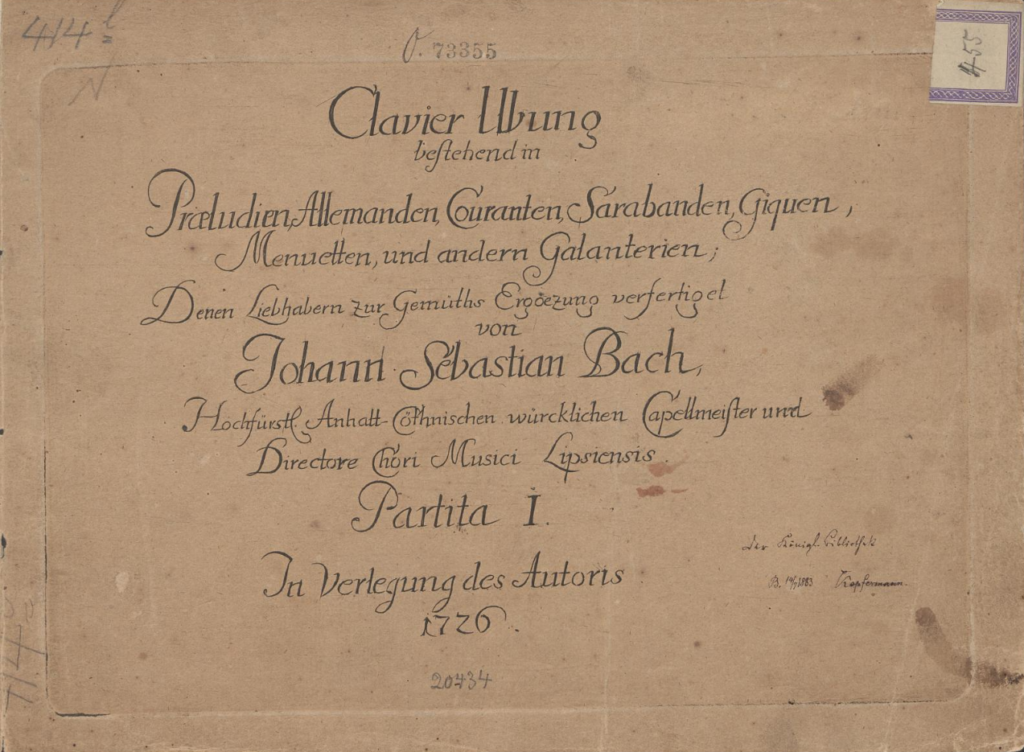Bach’s first venture into music publication was the first Partita for the keyboard, in B flat major, now catalogued as BWV 825. Inspired by Handel, who in 1720 had published his “Eight Great Suites” in London with much success, Bach had the plan to continue to compose and publish additional partitas, to configure a collection.
The first Partita was announced in the Leipzig newspaper (the “Leipzig Post-Zeitungen”) on November 1st, 1726, with the promise that each successive addition to the set “would be made known to amateurs of the clavier”. Bach eventually completed six, which were published as a set in 1731 and labeled Part I of the “Clavier-Übung”, i.e. “Keyboard Exercises”. This broader series also grew over time to include three additional parts: the Italian Concerto and French Overture (Part II, of 1735), the German Organ Mass (Part III, 1739) and the Goldberg Variations (Part IV, 1741).
Since the early 1700s, suites of dances were a popular genre of keyboard music both for performers and audiences. They typically consisted of a set of dances in similar or closely related keys, preceded by a prelude or overture.
In his collection of partitas, Bach used a different type of movement to start each one (Praeludium, Sinfonia, Fantasia, Ouverture, Praeambulum and Toccata). For the rest of the movements, he consistently included the four customary dances (Allemande, Corrente or Courante, Sarabande, and Giga or Gigue), adding other movements (“andern Galanterien”, as stated in the title page) in different positions in the second half of the work. In the case of the first Partita, he added two contrasting menuets after the Sarabande, one with a single melodic line over a bass, the second one in four voices with a denser harmonic texture.

